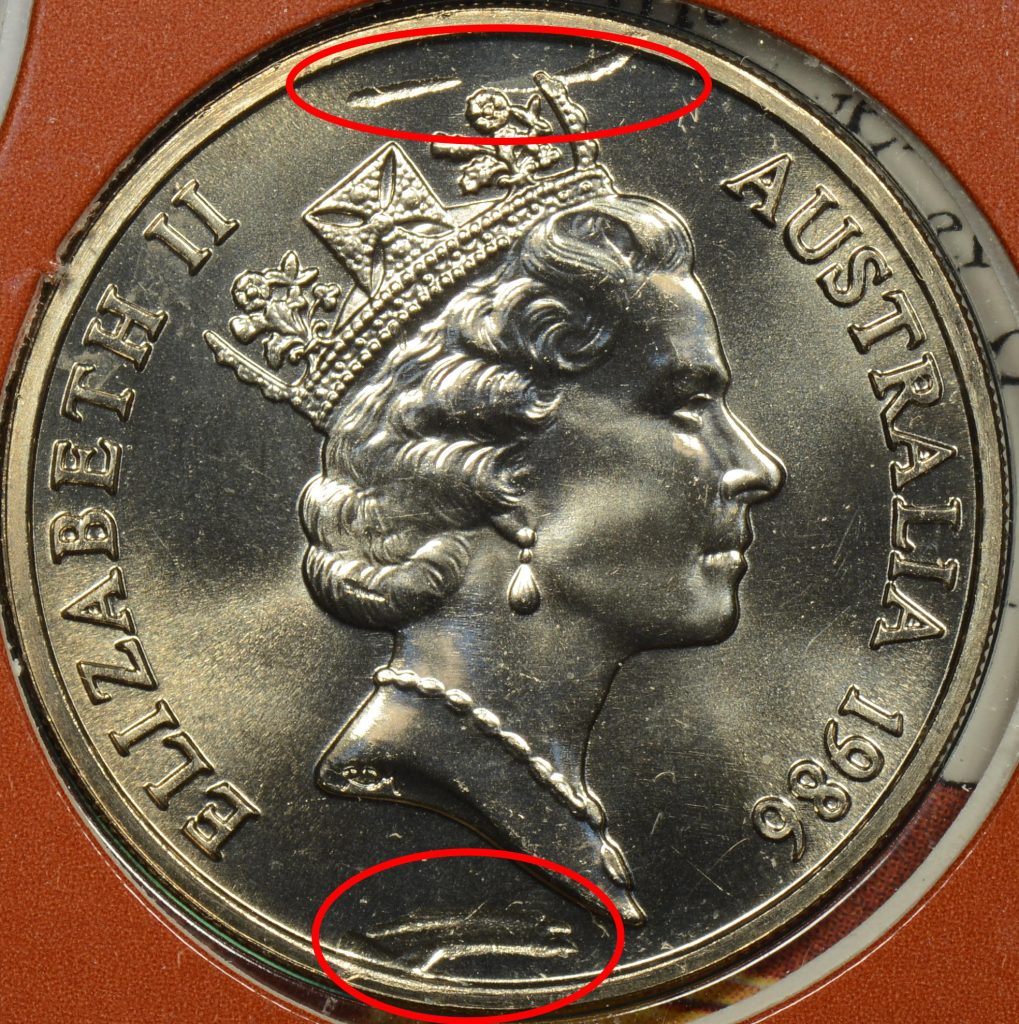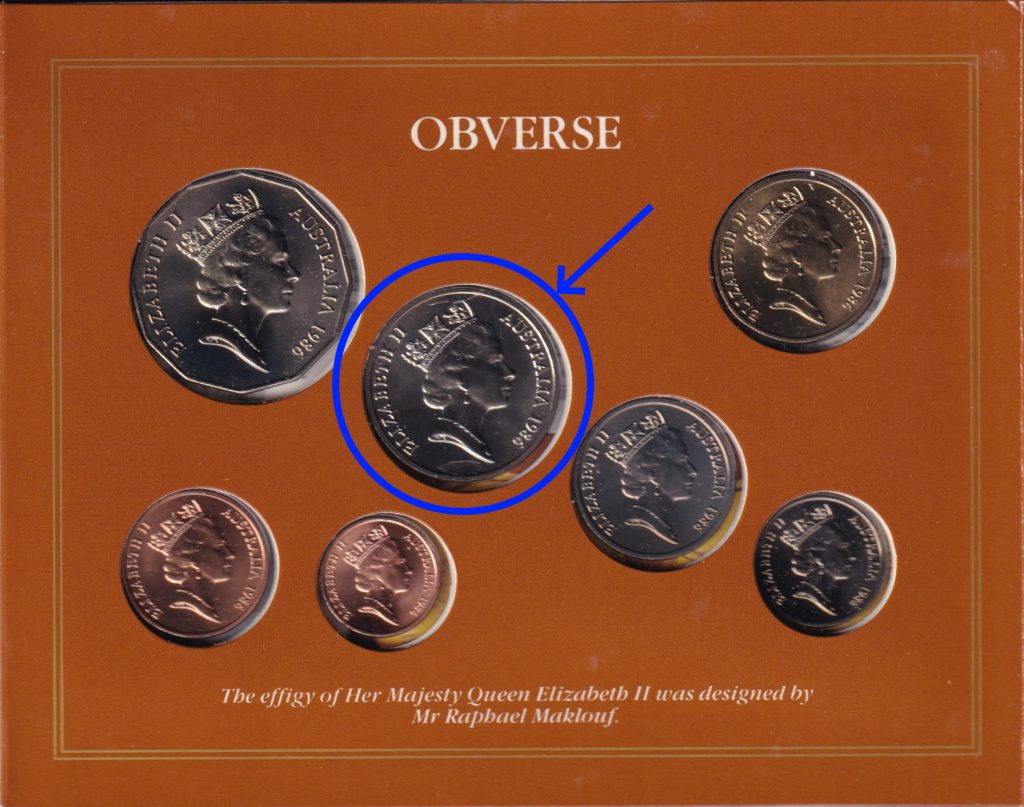As originally published in Australasian Coin and Banknote Magazine.
What Went Wrong -error coins that escaped the Mint
Figure 1 shows a 20 cent with two areas that have been struck through either oil or debris. The ‘strike through’ error is a catch-all term that covers the family of errors where some sort of foreign material comes between the coin die and the blank planchet when it is struck. This results in an area of the coin design being largely obscured or completely obliterated. What sorts of foreign material can come between the planchet and the die? Most commonly, it’s oil or grease. Less commonly it might be scrap metal or swarf, cloth, wire, cotton, or very rarely a screw or some other metal fastener.
In the case of the coin shown in Figure 1 there are two main struck through areas, one above and through the Queen’s crown and one below the truncation of the portrait. We’re not 100% certain what the foreign material was that caused the error. However, if pressed we’d suggest the strike through at the top of the coin was through grease or oil due to the uneven rounded nature of the flaw. The one at the bottom of the coin looks different, more angular and regular with a linear nature which may indicate it was struck through a bit of scrap metal.
What really makes this error interesting though, is that it’s housed in a 1986 mint set! See Figure 2. Somehow this error escaped the Royal Australian Mint after going through many more quality checks than a run-of-the-mill circulation coin. Mint set coins are handled differently to circulation coins, hand packaged, and presumably each coin is given an eyeball quality check by packaging staff. Clearly this little gem slipped through all of that and is still housed in the original mint set packaging. Sure, it’s not the best mint set error we’ve ever seen, but it’s certainly one worth putting into a quality collection of errors.
Mark Nemtsas and Kathryn Harris own and run ‘The Purple Penny’ coin shop in Adelaide and are passionate about error coins.



